Search Results for call
Explore AI generated designs, images, art and prompts by top community artists and designers.

A surreal landscape rippling reflections dance across a frozen lake in the middle of winter , capturing a beautiful dancer in dynamic motion , made of water , reflecting aurora , rendered entirely an extraordinary gown constructed entirely of razor-sharp glass shards meticulously arranged in intricate hexagonal snowflake patterns. The model strikes a dynamic pose with arms gracefully extended , allowing the glass dress to fan out dramatically , that seem to stretch across the water's surface. Ultra HD , hyper-realistic wildlife photography aesthetic , cinematic contrast , rich textures. Shot with Nikon Z9 + 600mm f/4 | 1/3200s | f/4.5 | ISO 1600 | RAW ,

A cinematic aerial , top-down view of Ahmedabad city sky during the Kite Flying Festival. The wide on terrace spreads below in graceful geometry , with clusters of local families and children arranged across the on terrace , their movements forming flowing patterns when seen from above. From this elevated perspective , hundreds of Ahmedabad kites and traditional Japanese kites rise into a dramatic , cloud-filled sky , their fine strings subtly visible , visually linking earth and sky. Gujarati kites appear sharp , agile , and dynamic , scattered with rhythmic energy , while Hamamatsu Japanese kites dominate in scale—larger forms carrying bold calligraphy and symbolic motifs that read clearly even from a distance. Layers of soft grey and blue clouds drift slowly , creating cinematic depth and atmospheric motion , while bursts of vivid colour from the kites cut through the muted sky. skyscraper buildings , Sabarmati riverfront , trees , and open lawns remain clearly legible below , reinforcing openness , learning , and community. The mood feels expansive , harmonious , and poetic—celebrating tradition , youth , and cross-cultural exchange from a bird’s-eye perspective. Vivid watercolour illustration style with expressive brushwork , layered washes , rich pigment textures , soft edges , subtle light falloff , wide-angle cinematic aerial composition , high detail , museum-quality finish. ,

A cinematic aerial , top-down view of Ahmedabad city sky during the Kite Flying Festival. The wide on terrace spreads below in graceful geometry , with clusters of local families and children arranged across the on terrace , their movements forming flowing patterns when seen from above. From this elevated perspective , hundreds of Ahmedabad kites and traditional Japanese kites rise into a dramatic , cloud-filled sky , their fine strings subtly visible , visually linking earth and sky. Gujarati kites appear sharp , agile , and dynamic , scattered with rhythmic energy , while Hamamatsu Japanese kites dominate in scale—larger forms carrying bold calligraphy and symbolic motifs that read clearly even from a distance. Layers of soft grey and blue clouds drift slowly , creating cinematic depth and atmospheric motion , while bursts of vivid colour from the kites cut through the muted sky. skyscraper buildings , Sabarmati riverfront , trees , and open lawns remain clearly legible below , reinforcing openness , learning , and community. The mood feels expansive , harmonious , and poetic—celebrating tradition , youth , and cross-cultural exchange from a bird’s-eye perspective. Vivid watercolour illustration style with expressive brushwork , layered washes , rich pigment textures , soft edges , subtle light falloff , wide-angle cinematic aerial composition , high detail , museum-quality finish. ,

A cinematic aerial , top-down view of Ahmedabad city sky during the Kite Flying Festival. The wide open school मैदान spreads below in graceful geometry , with clusters of local families and school children arranged across the grounds , their movements forming flowing patterns when seen from above. From this elevated perspective , hundreds of Ahmedabad kites and traditional Japanese kites rise into a dramatic , cloud-filled sky , their fine strings subtly visible , visually linking earth and sky. Gujarati kites appear sharp , agile , and dynamic , scattered with rhythmic energy , while Hamamatsu Japanese kites dominate in scale—larger forms carrying bold calligraphy and symbolic motifs that read clearly even from a distance. Layers of soft grey and blue clouds drift slowly , creating cinematic depth and atmospheric motion , while bursts of vivid colour from the kites cut through the muted sky. Kite Hotel buildings , Sabarmati riverfront , trees , and open lawns remain clearly legible below , reinforcing openness , learning , and community. The mood feels expansive , harmonious , and poetic—celebrating tradition , youth , and cross-cultural exchange from a bird’s-eye perspective. Vivid watercolour illustration style with expressive brushwork , layered washes , rich pigment textures , soft edges , subtle light falloff , wide-angle cinematic aerial composition , high detail , museum-quality finish. ,

Gigapixels microscopically , artwork with a broad horizon backdrop , blending technology and the Christmas time , Christmas tree , gifts in a sphere glass , night view form top , Santa Claus flying with sleigh pulled by reindeer , around the sphere , Las Vegas city background , close-up , hyper detailed , trending on art-station , sharp focus , studio photo , intricate details , highly detailed ,

A technically detailed , futuristic , streamlined alien space battle cruiser , with a strange eagle skull smoothly integrated into its metallic hull , flying past a large planet. The ship appears as a pure space predator. Starfield background with scattered nebulae , illuminated by a distant binary star system creating dramatic rim lighting and casting long , deep shadows. Digital matte painting , awe-inspiring scale , reminiscent of the works of H.R. Giger for its biomechanical integration and Syd Mead for its sleek futurism. ,

Minimalist abstract calligraphy painting using bold and flowing red water , softly blended into a textured , off-glowing deep black background , emphasizing the elegance of motion and negative space. Within the abstract strokes , a faint , stylized silhouette of Lord Shiva in Nata-raja dance pose , emerges--his matted hair forming a crescent arc , the outline of his trident subtly rising behind him. The figure is gracefully interwoven into the flow of orange , gray and black , evoking divine presence through suggestion rather than detail. Digital high-resolution style , perfect for abstract spiritual wall art. ,

A breathtaking 8K hyperrealistic , cinematic photograph , ultra-detailed , showcasing a powerful and beautiful angelic figure. She possesses a voluptuous , strong feminine form , with majestic , luminous white feathered wings and a gentle expression framed by striking blue eyes. She is gracefully levitating in mid-air , subtly suspended as if on an invisible ethereal current , her arms elegantly posed , holding a beautifully wrapped Christmas gift box adorned with a golden ribbon. Her long , dark , slightly glowing hair flows freely , moved by an unseen magical breeze. She wears an elegant , flowing , ethereal white lace gown with intricate floral embroidery , crafted from mystical , subtly sheer fabrics that exquisitely accentuate her refined silhouette. Behind her , an expansive , enchanted snowy night fantasy world unfolds under a vast , starry night sky , filled with gently falling snowflakes. Below , a sprawling , illuminated fantasy cityscape glimmers with warm glowing windows , and a massive , intricately decorated Christmas tree stands majestically in the distance. The breathtaking landscape also reveals subtle elements of mystical floating islands , distant , snow-capped mountains , and ancient , magic-infused ruins , all inspired by the most prestigious designer of nature , goddess Aphrodite. Magical energy subtly radiates around her body. The atmosphere is profoundly ethereal , festive , and mystical , bathed in soft , glowing cinematic light that emphasizes her divine , powerful presence. Intricate linework and luminous textures blend seamlessly to create a harmonious composition of unparalleled delicacy and grandeur. The overall style is an exquisite blend of high fantasy majesty with absolute photorealism , achieving an almost sacred , dreamlike quality. ,
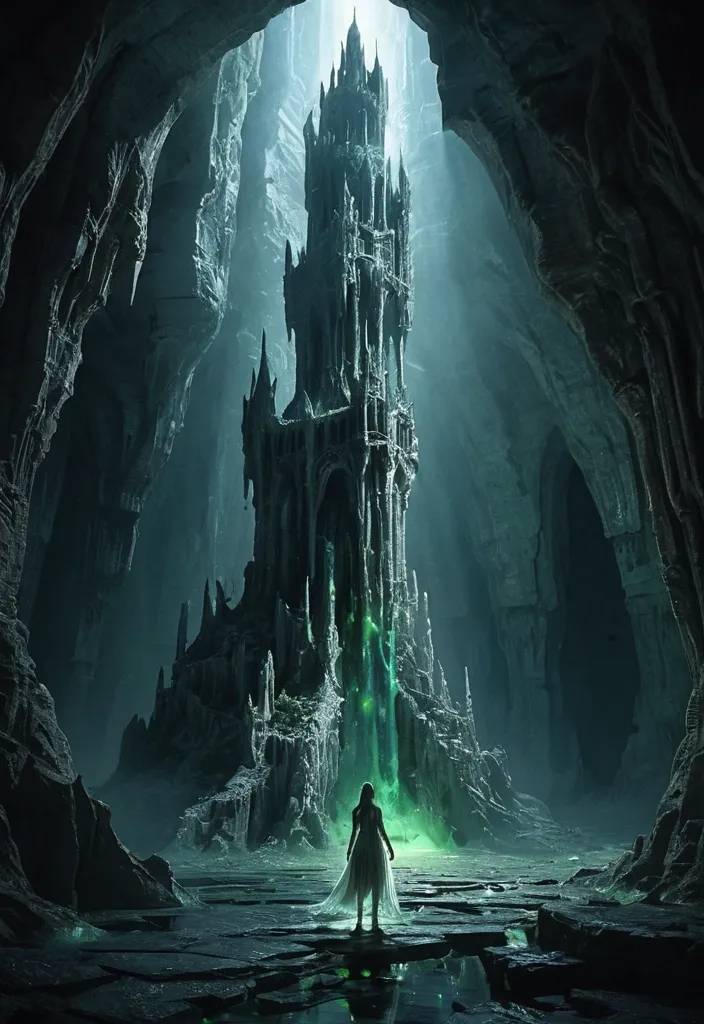
Imagine a colossal limestone tower , its rugged surfaces glistening with mineral veins , a lonely female play violin and standing in white dress on , rising majestically within the vast expanses of a cavern in the elemental plane of earth. The dim light filters through cracks in the cavern ceiling , reflecting off the female’s face , casting eerie shadows that dance upon the rocky floor. Stalactites hang like ancient chandeliers , dripping occasional droplets that echo softly in the stillness of the cavern. Around the base of the tower , earthy textures interweave with patches of luminescent moss , glowing faintly in green and blue hues. A faint , swirling mist hugs the ground , evoking a sense of mystique and magic within this subterranean realm. Render this scene in a dark fantasy concept art style , emphasizing the grandeur and magical essence of the tower towering in the depths of the earth. ,

Santa Claus , depicted with a photorealistic , weathered face and kind eyes , sits in a dimly lit workshop filled with the glow of a few strategically placed lanterns and the warm light emanating from wooden toys. His hands , one holding a half-finished wooden train , are illuminated by the soft light , highlighting the texture of his worn leather gloves. The scene evokes a sense of quiet anticipation , rendered with cinematic depth and a focus on realistic textures and warm holiday light. ,

A Bengal tiger riding a skateboard down a palm-lined street at sunset. All four paws visible , the tiger pushing with its left hind paw , balancing dynamically on the board. Vibrant orange and black fur , dramatic golden-orange lighting from the setting sun. Poster-style illustration , bold colors , slightly stylized , in vintage asian art style ,
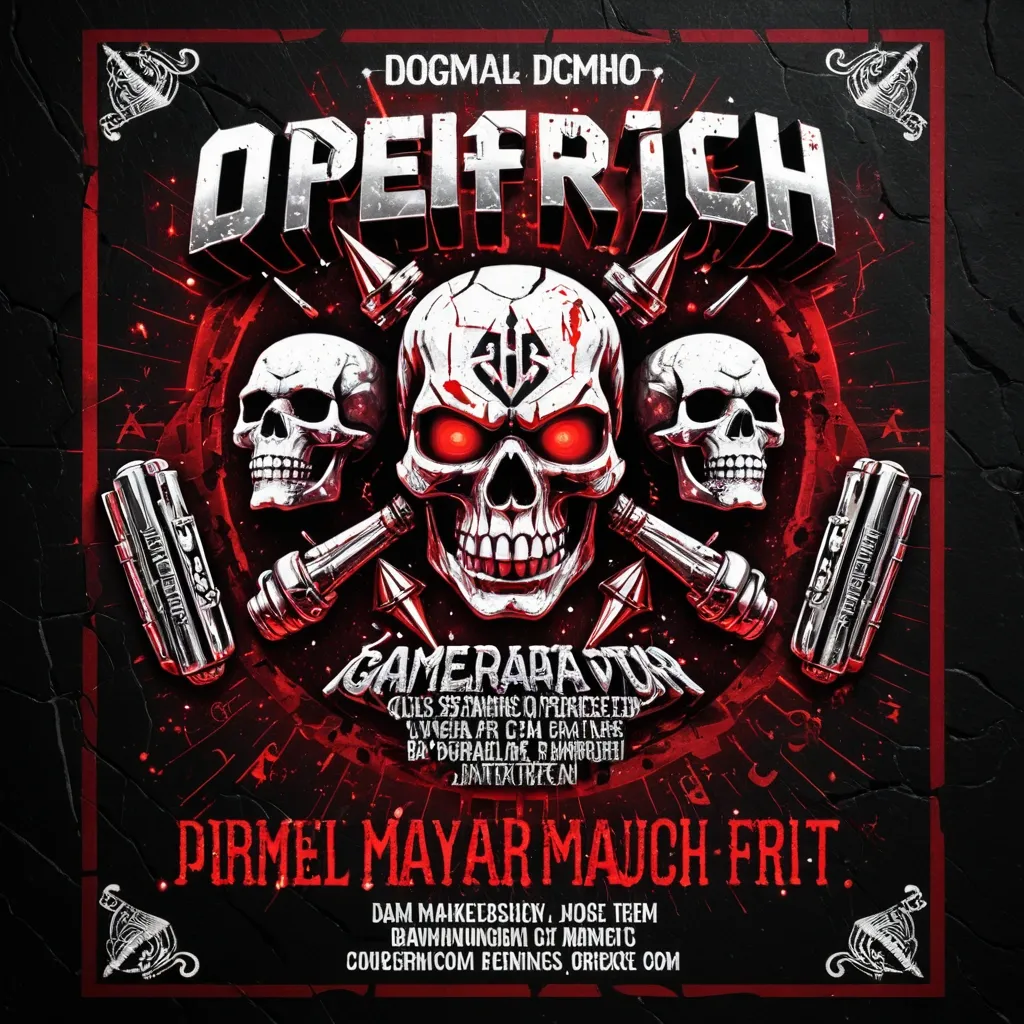
Crea un flyer vertical formato 9:16 para redes sociales de un concierto de rock. Fondo oscuro con diseño muy rockero: texturas de negro , humo , destellos , calaveras y logotipos de rock en rojo , blanco y gris metálico. En la parte superior , coloca el título grande "CHACRITA ROCK" en tipografía muy atractiva , llamativa y rockera , estilo heavy metal/graffiti , con efecto glow rojo y sombras fuertes. Debajo del título , centrado , el texto "PRESENTA" en una fuente rockera más pequeña pero contundente. En el centro del flyer coloca , bien recortada y destacada , la imagen de una calavera cyborg envuelta en vendas (como la que se proporciona) , con iluminación dramática de escenario y reflejos rojos alrededor. Alrededor de esta imagen central , distribuye de manera equilibrada y legible los nombres de las bandas con diferentes tipos de letra rockeros pero claros: "MEVAK" , "VESTIGIO" , "PEQUEÑA PDJ" , "MERCENARIOS" , "PALTEADOS" , "MAHEDO" , "PEPELUCHOS" , "GINO SOLAMENTE GINO" Y "ROCKER-FELER". Usa para cada uno estilos distintos (gótico , stencil punk , metálico , graffiti , script agresivo) , en colores blanco , rojo o plateado con brillos para que resalten sobre el fondo. En la parte inferior del flyer , agrega el texto destacado "BARRA LIBRE HASTA LAS 10 PM" en una fuente gruesa , incendiaria , muy rockera , con subrayado o efecto de fuego. Debajo , en una fuente más limpia pero con carácter , coloca: "FECHA: SÁBADO 27" y en la línea siguiente "LUGAR: Chacrita Rock REFERENCIA: Metros Antes de llegar alas Ex-Oficinas De APC (Callejón Santo Domingo)" , "INGRESO LIBRE" Mantén una composición equilibrada , con buen espacio entre textos , sensación de concierto potente y estética profesional lista para publicación en redes que se note todo completo sin recortes. que todos los textos encuadren en el flyer creado. ,

Create a stylish poster 2:3 aspect ratio featuring a miniature 3D model of Statue of Unity , world's tallest statue , located at bank of Narmada river , near Kevadia , Gujarat , showcasing its key landmarks , bursting through a torn , horizontally laid-out physical INDIA map , seamlessly integrated into the design. A white sleek 3D rendering of the name Statue of Unity. blends organically into the natural mountains. Use a dynamic camera angle and dramatic perspective for depth , with natural yet vibrant colors. Employ studio lighting for sharp , high-detail contrast , set against a old paper background. The image should resemble a professional DSLR photograph-crisp , high-resolution , and visually striking , merging realism with artistic flair. ,

A Indian woman adorned in the Spiral blue & Off green Amira Aari Saree , the intricate patterns and vibrant colors unfurling like a blossoming flower. The fabric spirals outward dramatically , showcasing an explosion of color. Her head , elegantly positioned , adds to the visual allure against a softly blurred backdrop , emphasizing the Saree's stunning visual effect. Clean image , no extra logos or text. --ar 4:5 --style raw --v 6 --s 200 ,

A photorealist , full lenght , natural face , a Indian woman adorned in the Spiral blue & Off green Amira Aari Saree , the intricate patterns and vibrant colors unfurling like a blossoming flower. The fabric spirals outward dramatically , showcasing an explosion of color. Her head , elegantly positioned , adds to the visual allure against a softly blurred backdrop , emphasizing the Saree's stunning visual effect , barefoot sitting legs crossed on a bed in a blue and white futuristic bedroom , space ships seen through a windows ,

A striking bird’s-eye view captures an Indian woman adorned in the Spiral Bloom Banarasi Kanjivaram Navy Color Art Silk Saree , the intricate patterns and vibrant colors unfurling like a blossoming flower. The fabric spirals outward dramatically , showcasing an explosion of color. Her head , elegantly positioned , adds to the visual allure against a softly blurred backdrop , emphasizing the Saree's stunning visual effect. ,

A serene wabi-sabi inspired landscape painting , minimalist zen composition , soft earth tones , misty horizon , subtle handmade paper texture , calm spiritual atmosphere. Elegant Arabic calligraphy written clearly and correctly: "فَبِأَيِّ آلَاءِ رَبِّكُمَا تُكَذِّبَانِ" , traditional ink brush style , slightly imperfect strokes , balanced negative space , timeless fine art wall painting , museum quality , tranquil lighting ,

Create a calm , zen-inspired wabi-sabi landscape painting intended for a large printed wall artwork. Use muted earth tones , soft mist , natural imperfections , and subtle paper texture. Include elegant Arabic calligraphy written clearly and accurately with correct diacritics: “فَبِأَيِّ آلَاءِ رَبِّكُمَا تُكَذِّبَانِ”. The calligraphy should appear hand-brushed , organic , and harmonious with the composition. Minimalist , spiritual , timeless , landscape orientation , fine art quality ,
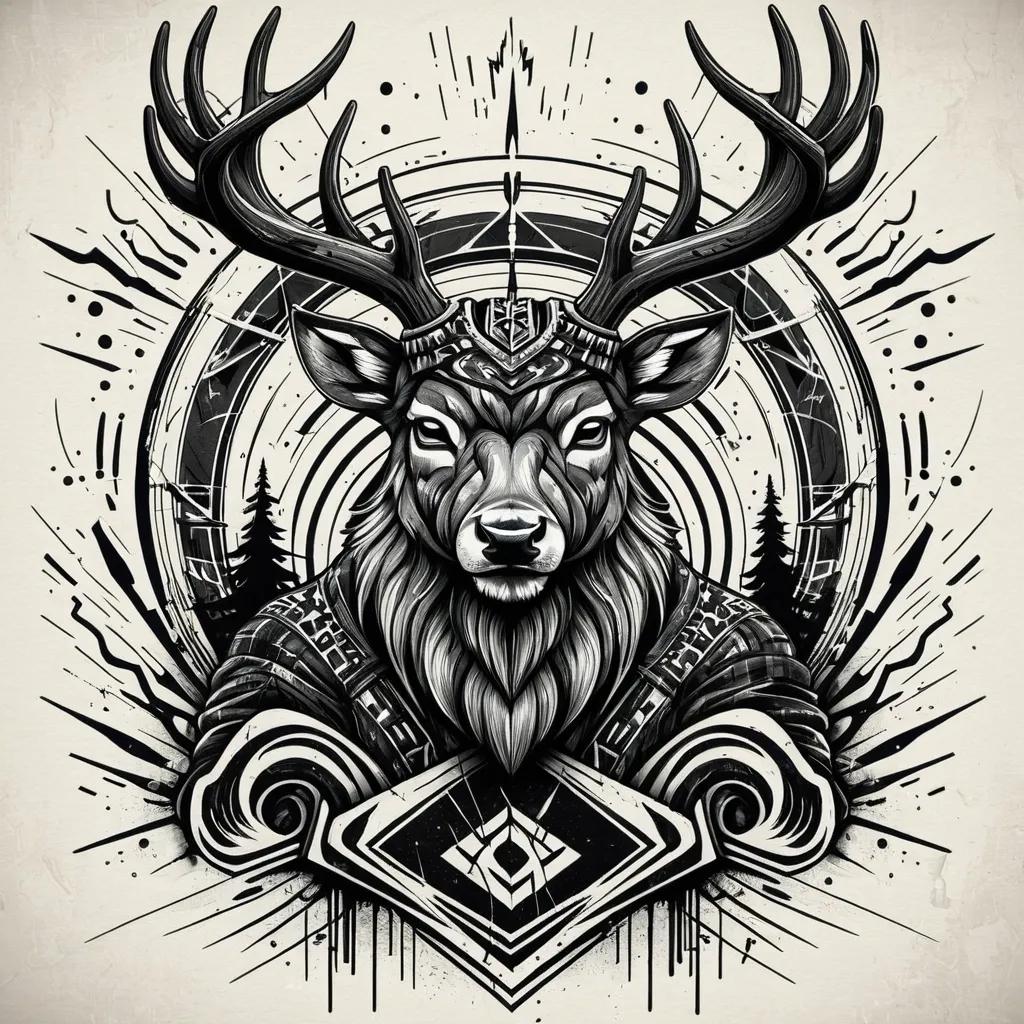
Create a bold , highly detailed illustration in the style of streetwear graphic art similar to tattoo-style Siberian designs. Central character: a powerful deer with large antlers , drawn in an aggressive and dynamic manner. Use thick expressive lines , dense hatching , dramatic shadows , and sharp contours. Add cracked stone textures , wooden elements , and ornamental details around the deer. Behind the deer , include energetic graphic shapes and strokes to add movement. The composition should be vertically tall , suitable for a t-shirt print. Add stylized lettering at the top and bottom (do not copy existing brands). Overall style: gritty , powerful , masculine , with strong contrast and high detail. ,
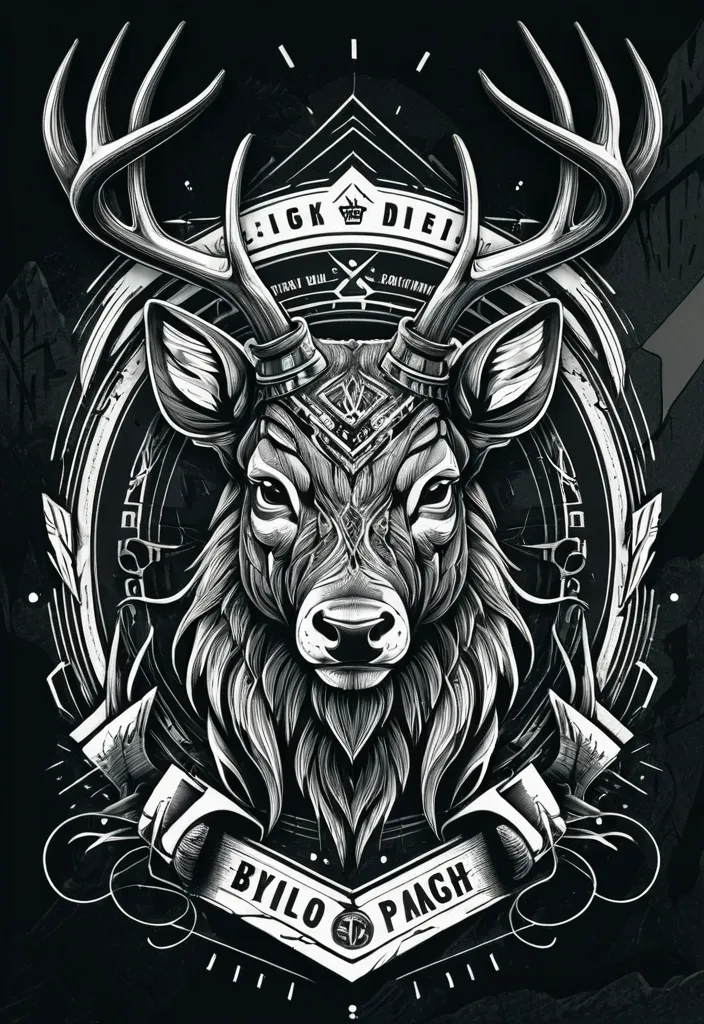
Create a bold , highly detailed illustration in the style of streetwear graphic art similar to tattoo-style Siberian designs. Central character: a powerful deer with large antlers , drawn in an aggressive and dynamic manner. Use thick expressive lines , dense hatching , dramatic shadows , and sharp contours. Add cracked stone textures , wooden elements , and ornamental details around the deer. Behind the deer , include energetic graphic shapes and strokes to add movement. The composition should be vertically tall , suitable for a t-shirt print. Add stylized lettering at the top and bottom (do not copy existing brands). Overall style: gritty , powerful , masculine , with strong contrast and high detail. ,
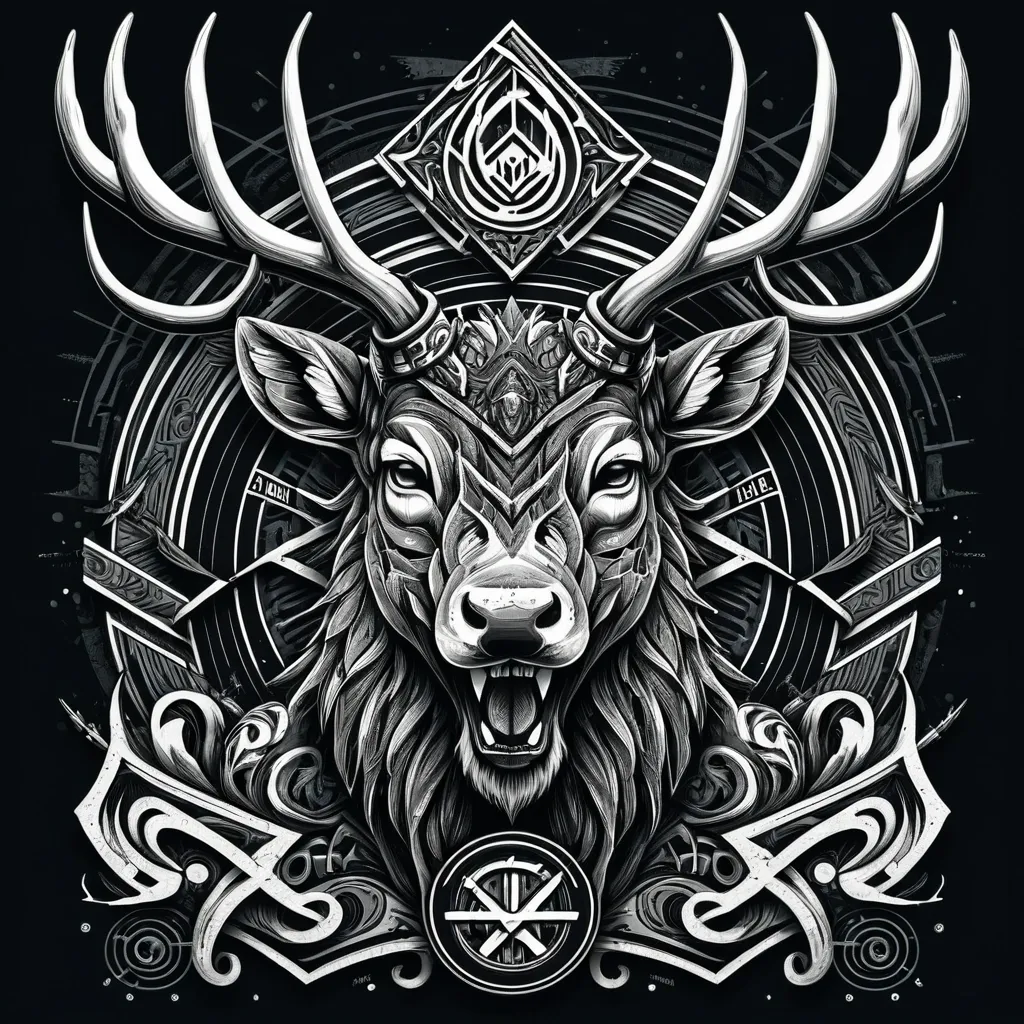
Create a bold , highly detailed illustration in the style of streetwear graphic art similar to tattoo-style Siberian designs. Central character: a powerful deer with large antlers , drawn in an aggressive and dynamic manner. Use thick expressive lines , dense hatching , dramatic shadows , and sharp contours. Add cracked stone textures , wooden elements , and ornamental details around the deer. Behind the deer , include energetic graphic shapes and strokes to add movement. The composition should be vertically tall , suitable for a t-shirt print. Add stylized lettering at the top and bottom (do not copy existing brands). Overall style: gritty , powerful , masculine , with strong contrast and high detail. ,
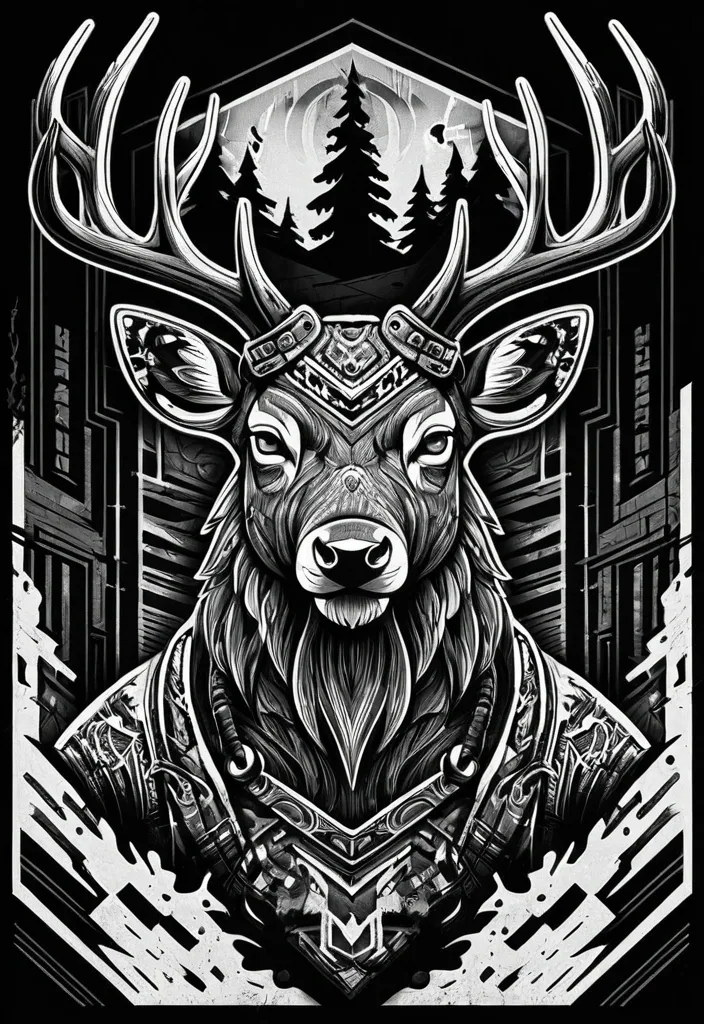
Create a bold , highly detailed illustration in the style of streetwear graphic art similar to tattoo-style Siberian designs. Central character: a powerful deer with large antlers , drawn in an aggressive and dynamic manner. Use thick expressive lines , dense hatching , dramatic shadows , and sharp contours. Add cracked stone textures , wooden elements , and ornamental details around the deer. Behind the deer , include energetic graphic shapes and strokes to add movement. The composition should be vertically tall , suitable for a t-shirt print. Add stylized lettering at the top and bottom (do not copy existing brands). Overall style: gritty , powerful , masculine , with strong contrast and high detail. ,

Create a high-resolution DSLR-style portrait photo. Use the exact facial details and proportions of the referenced person (100% likeness). Design the image in a letter-cutout composition (Letter Portrait Style) , shaped like the letters "RAJU" in an elegant , organic serif typeface with subtle botanical flourishes , with the person's face and hands appearing realistically through the cutout areas. Image Requirements: Soft , clean studio lighting with a minimal white tone Ultra-sharp facial focus with high-end editorial quality Calm and confident half-gaze (1/2eye expression) Hands positioned at the upper and lower edges of the letter shape , as if holding the cutout Fully photorealistic result , not digital art Plain black background Clothing matches the subject's gender (simple , soft-toned attire that looks natural and elegant) Output in high resolution (8K clarity or DSLR-equivalent) Maintain the lighting temperature and aesthetic of the provided sample style. ,

extreme close-up half-portrait of a young woman. Razor-sharp focus on her deeply contemplative eye. and long , wavey hair forming dramatic , harsh , volumetric window-light shadows (suggesting palm leaves or blinds) across her face. Her lips are parted slightly , soft , and natural. Her eyes are bright , cool blue with a hint of grey , slightly almond-shaped with naturally curled lashes and softly defined brows. Her nose is delicate and narrow with a softly rounded tip , clearly adorned with a small silver nose ring piercing on her left nostril , catching the light with a subtle metallic reflection. Her lips are full with natural fine lines , warm rose-brown in color , subtly highlighted by the flash. Her skin has a warm , sun-kissed bronze tone with visible freckles , natural pores , faint veins , and a subtle sheen that reflects the flash realistically. Her hair is deep brunette , long and wavy with curtain bangs , a few realistic flyaways framing her face , humidity-reactive strands catching light. The entire right side of the image , background and all , falls off into deep , creamy , dreamy bokeh blur , with extremely shallow depth of field and subject isolation. Arthouse movie-like , minimalist , profoundly melancholic , haunting atmosphere with subtle film grain and minimal vignette. ar-3:4 ,

A hyperrealistic 8K ultra-high-definition cinematic photograph of a vast , bustling , and highly efficient modern logistics center. The scene is alive with dynamic activity: numerous forklifts and automated guided vehicles (AGVs) smoothly navigate across the polished concrete floor , transporting pallets stacked high with a diverse range of goods. Long , intricate conveyor belts run overhead and at floor level , moving packages rapidly through various sorting and packing stations. Towering , multi-tiered shelving units extend majestically towards the high ceiling , neatly organized with inventory , creating an imposing sense of scale. In the mid-ground , workers in bright safety vests are actively engaged in their tasks: some meticulously sorting packages , others scanning barcodes with handheld devices , and operating control panels. Automated robotic arms precisely pick and place items from shelves , demonstrating technological prowess. Overhead , drones might be seen performing inventory scans , adding a subtle futuristic touch to the advanced warehouse operation. The lighting is a sophisticated mix of bright industrial LED lights illuminating the vast space and natural daylight streaming in through large skylights and expansive windows , creating areas of sharp focus , realistic reflections on the floor , and subtle , dramatic shadows. Dust motes are faintly visible dancing in the strong beams of light , adding to the gritty realism and active atmosphere. The overall composition conveys organized chaos , precision , and continuous motion , vividly capturing the essence of modern supply chain operations at its peak efficiency. ,

A highly stylized 3D caricature of a Indian middle-aged poor woman with an oversized head cooking eggplant stir-fried with wild betel potato in a traditional village style kitchen. She is holding a wooden spatula , gently stirring Potatoes slices mixed with slices of tomatoes and purple Brinjal in a black iron pan over a gas stove. Natural warm lighting , steam rising , rustic Indian kitchen background. The animation should feel light , joyful , and full of gentle charm. High motion , cinematic tracking video shot , the camera moving dynamically forward , epic cinematic video shot , ultra detailed cinematic , epic wide shot , IMAX film camera , cinematic frame lens , cinematic wide shot , warm and dreamy tones , inspired by romanticism , (exquisitely beautiful) , cinematic , (gorgeous) , insane details , 8K , UHD , (brilliant composition) , cinematic pace. movements are bold , intense atmosphere , 32k , dramatic composition ,



